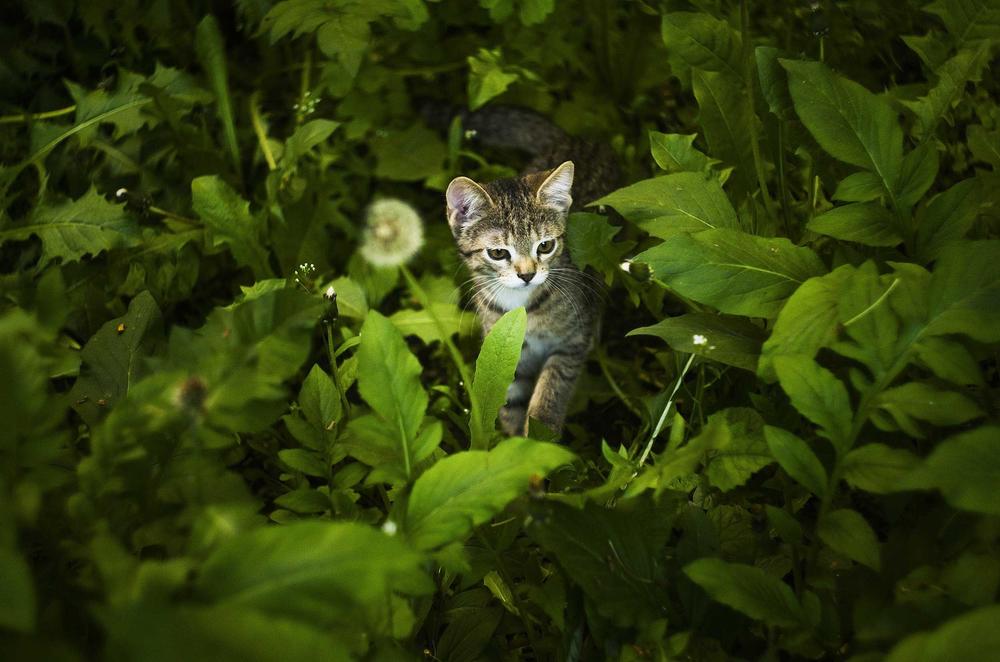Cause of Fatal Staggering Disease
Novel Rustrela virus causes severe meningoencephalitis in domestic cats, as found in a study involving veterinarians at Freie Universität
Jun 26, 2023
Dangers lurk in the pleasure of hunting: Scientists suspect that cats can be infected with the Rustrela virus via infected mice.
Image Credit: pexels-pixabay
Sometimes staggering disease affects a lion from a zoo. Sometimes it is a pet cat that is allowed to roam around freely outside. Occasionally, an animal is taken to a clinic with strange neurological symptoms: a staggering gait, changes in personality or rigidity. There is no therapy and the animals usually have to be euthanized. “During autopsy we see brain lesions similar to those in nonsuppurative meningitis,” says Lars Mundhenk, a veterinarian who holds a doctorate and is based at the Institute of Veterinary Pathology at Freie Universität Berlin. A pet cat from Berlin and a red-necked wallaby (a species of kangaroo) from a zoo in Brandenburg were also diagnosed with this disease.
A team of scientists under the leadership of the Friedrich-Loeffler-Institute (FLI), the German Federal Research Institute for Animal Health, closely studied the brain tissue of the cat and that of twenty-seven conspecifics from Germany, Sweden, and Austria. Mundhenk was surprised by the results. The cause was not the Borna disease virus, as expected, which can also cause similar symptoms in horses, alpacas and sheep, but rather the novel Rustrela virus (RusV). The scientists found RusV in twenty-seven of the twenty-nine samples.
RusV First Discovered in 2020
Staggering disease was first observed in cats in the 1970s in Sweden and later also in Austria. However, the cause remained unknown. The Rustrela virus itself was discovered in 2020 in zoo animals in northern Germany that had suffered from fatal meningoencephalitis. It was also found in yellow-necked mice.
RusV belongs to the genus Rubivirus. For a long time, the only known member of this family was the Rubella virus (RuV), which causes rubella (also known as German measles or three-day measles) in humans. The discovery of a third related virus in animals, the Ruhugu virus (RuhV), found in Cyclopean round-nosed bats in Uganda, suggests that Rubella virus may also be of animal origin.
Whether Rustrela has zoonotic potential, i.e., whether it can also spread from animals to humans and also cause meningoencephalitis , is currently the subject of research at the Friedrich-Loeffler-Institute. One thing is clear: All three viruses are genetically closely related.
Route of Transmission is Unclear
The study also showed that the virus is much more widespread in Europe than previously thought. Mundhenk explains, “The exact route of transmission is still unknown, but we suspect that the cats became infected while hunting mice. Yellow-necked mice are probably the carriers in Germany. The rodents themselves do not seem to get sick.”
For Mundhenk the work is just beginning. In the archives of the School of Veterinary Medicine at Freie Universität, there are countless tissue samples from animals suffering from nonsuppurative meningoencephalitis of unknown origin. The samples are hermetically sealed in paraffin blocks. Mundhenk says, “We now want to retrospectively examine the samples to determine the number of cases and find out in which species we can still find Rustrela virus. In addition, we want to seek evidence for its first occurrence.” The team at Freie Universität aims to analyze samples from 160 animal species. In addition to the samples from cats, there are also samples from dogs, pigs, cattle, sheep, goats, raccoons and other animals.
So far, it appears that a RusV infection is limited to the brain, but there are many unanswered questions, because the transmission routes are completely unclear. Therefore, the researchers plan to investigate whether they also find the virus in other organs and tissues. Mundhenk notes that if RusV can be detected in the gastrointestinal tract, it could mean that it can be excreted and taken up by other animals through the feces. In comparison, the related Rubella virus is transmitted via droplet infection. The scientists will also examine nasal tissue, if present, under the microscope.
In addition, Koch’s postulates need to be met in order to establish a causal relationship between a microbe and a disease. Mundhenk summarizes, “The virus has to be isolated from one animal and injected into another. If both animals exhibit the same symptoms, it proves that the pathogen is the cause of the disease.”
Roving Cats Most Likely to Be Affected
It currently appears that the disease is only sporadic. All the affected cats were outdoor cats. It seems that the one in Berlin had the misfortune to eat an infected mouse. Conspecifics that only stay indoors are probably not at risk. Mundhenk says there is no evidence that animals living in multi-cat households infect each other. However, it is not possible to prevent an infection in cats that are allowed to go outside. Prevention in these animals would be possible through comprehensive “rodent control,” which pathologist Mundhenk says is unrealistic.
It is still not known, whether Rustrela virus can be transmitted to humans and might pose a threat to them. It is also unclear whether cross-immunity can be achieved with a vaccine available against the related Rubella virus.
This article originally appeared in German in the Tagesspiegel supplement published by Freie Universität Berlin.
Further Information
Dr. Lars Mundhenk, Institute of Veterinary Pathology, School of Veterinary Medicine, Freie Universität Berlin, Email: Lars.Mundhenk@fu-berlin.de

